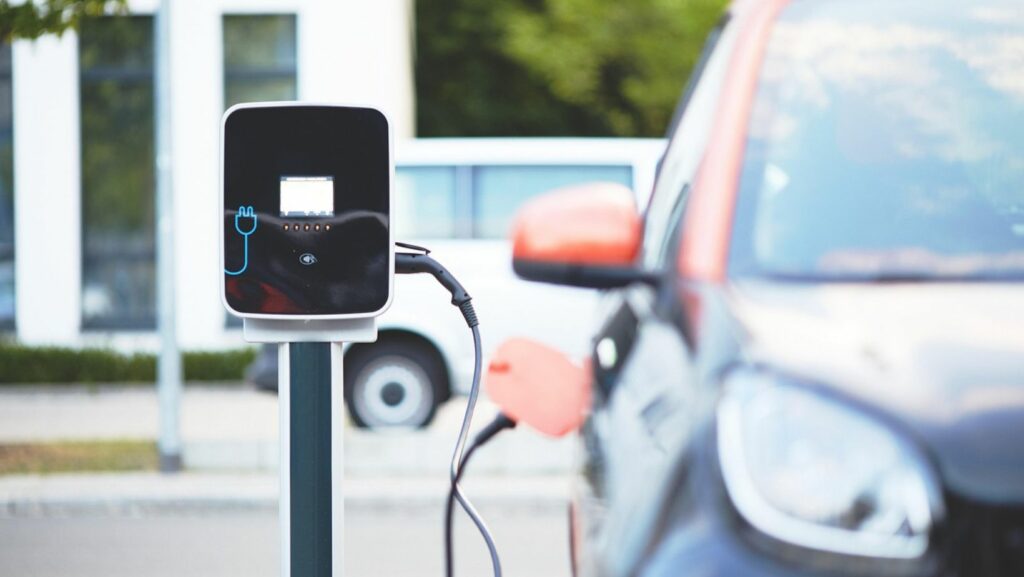Had a collision with your electric vehicle?
It happens. With 3.14 million electric vehicles on the road in the US today, electric car accidents are on the rise. In fact, here’s some news that will really shock you…
Electric vehicle accidents are unique
The actions you should take after a collision involving an electric vehicle differ from traditional car crashes. From the battery risks involved to first responder limitations, the right electric car accident response protocol can keep you out of harm’s way.
What you’ll discover:
- Immediate Safety Actions
- The Distinctive Hazards of Electric Car Accidents
- Contacting a Professional for Assistance
- Dealing with Insurance & Legal Matters
- Documenting Evidence and Relevant Details
The Truth About Electric Vehicle Collision Dangers
Did you know something most electric vehicle drivers don’t?
Electric vehicle accidents present dangers that traditional car accidents don’t. In fact, research has revealed that new electric vehicle owners are three times more likely to get into a car accident. That’s because drivers are unfamiliar with electric vehicles’ instant torque and acceleration.
But that’s not even the scary part…
EV batteries present unique fire and electrocution dangers in a collision. Each battery weighs upwards of 2,900 pounds and can contain up to 650 volts. That’s 27 times more voltage than a standard vehicle. Even in a damaged state, an EV battery can leak toxic chemicals and catch fire hours after an accident occurs.
One last thing:
Over 40% of first responders have never received electric vehicle-specific safety training. That means that emergency responders may not be fully prepared to handle an electric car accident with your electric vehicle.
Step 1: Immediate Safety Steps to Take
There’s a reason we start with this first.
The first 60 seconds after an electric vehicle collision are the most important. Unfamiliarity with electric vehicle operations means you must react differently than a traditional car accident. So what should you do?
- Turn off the power. Even if your car appears to be in working order, electrical systems may still be active. Identify the power button or locate your manual’s emergency shutdown procedure.
- Exit the car if it’s safe to do so. Do not touch any exposed wires or damaged battery components. Orange wires are a sign of high-voltage components – do not touch.
- Move to a safe distance. Distance yourself and passengers at least 50 feet away. EV fires are hotter and burn longer than gasoline vehicle fires. In addition, damaged batteries are more likely to reignite after being extinguished.
- Call 911. Once safe, call 911 and inform them it is an electric vehicle accident. This will alert emergency services to the specific requirements and ensure trained personnel and equipment arrive.
Step 2: Checking for Battery Damage
This step can be a little more complicated…
Damage to your electric vehicle battery is sometimes not apparent at the time of a collision. Fires or smoke may not be visible, but the battery might still be damaged. Here are a few signs to look out for:
- Unusual smells or chemical odors
- Hissing, crackling, or popping sounds
- Visible damage to the vehicle’s undercarriage
- Sparks or unusual lighting
- Vehicle tilting or listing to one side
If you notice any of these signs, immediately increase your distance from the vehicle and ensure others stay back.
Remember: Battery fires may start hours after the accident. This is why having the vehicle inspected by a qualified technician is crucial.
Step 3: Proper Documentation
We often hear this one wrong from victims…
Standard accident documentation does not account for the special nature of electric vehicle accidents. You’ll need to provide additional evidence to cover yourself legally and ensure you have full insurance coverage. So what are you missing?
Photographic evidence of:
- Vehicle’s charging port (if applicable)
- Visible battery damage
- Orange high voltage warning labels
- Display screen error messages
- All angles of exterior damage
Written details of:
- Battery charge level at the time of accident
- If the vehicle was charging at the time of the accident
- Any dashboard warning messages displayed
- Vehicle make, model, and year
Step 4: Contacting a Professional for Assistance

Something we can’t stress enough with these kinds of collisions…
Electric vehicle accidents often involve complex liability issues that may not be familiar to many personal injury or accident lawyers. The additional hazards, repair costs, and safety procedures involved make for very different legal situations.
When you get into an electric vehicle accident, speaking with an experienced accident lawyer becomes even more critical. They will know how to account for EV-specific factors like battery damage, repair center requirements, and first responder protocols.
Step 5: Handling Insurance Issues
Here’s something that can be costly for EV owners…
Not realizing that electric vehicle repairs require certified facilities and technicians. Not all body shops are equipped to handle electric vehicles, and attempting repairs at an uncertified shop can void your warranty.
Electric vehicles are 6.7% more expensive to repair than traditional cars. Specialized parts, technician training, and safety procedures all come at a premium.
When filing insurance claims, make sure to:
- Ask for EV-certified repair facilities only
- Document battery damage separately
- Obtain multiple repair estimates from certified shops
- Don’t accept generic repair timelines
Insurance companies often have difficulty assessing the complexity of EV repairs, which can lead to delays and lowball settlements.
Special Cases
Here are a few that might come in handy, too.
Charging Station Accidents
If your electric vehicle is connected to a charging station during an accident, there are additional safety considerations. The charging system must be properly disconnected before any work can begin.
Parking Garage Accidents
EV fires in enclosed parking garages present a greater risk to life and structural integrity. The high temperatures and toxic fumes can quickly spread.
Water Involvement
Submerged or water-damaged electric vehicles can pose a significant electrocution hazard. Do not attempt to start or move the vehicle without a professional assessment.
First Responder Limitations
This can also affect you in the heat of the moment.
Emergency responders are still playing catch up with EVs. A large majority of first responders have not received an adequate amount of training on electric vehicle safety.
Meaning:
- Delayed response times as crews evaluate the situation
- Potential delays in rescue operations
- Risks of mismanaging electrical systems
- Confusion with existing response procedures
Awareness of these limitations will help you better communicate with emergency services.
Returning to the Road Safely
Driving after an electric vehicle accident isn’t as simple as it is with traditional collisions.
It’s important to verify your car’s safety systems, battery integrity, and electrical components are all restored to full capacity. This process includes a full battery system inspection, electrical safety certification, software resets and updates, and charging system tests.
Do not compromise your safety due to cost concerns. The unique fire, electrocution, and chemical dangers of electric vehicles require a full post-accident inspection.
Wrapping It All Up
Electric vehicle collisions require an entirely different response than regular car accidents. The risks to yourself and your passengers, along with your legal and financial liability, is at stake.
The takeaways? Seek safety first, document everything, and contact professionals who understand electric vehicle risks. With 33% of electric vehicle accidents involving pedestrians and cyclists – 1.5 times greater than traditional vehicles – there’s no time like the present.
Prepare today so you know what to do when an emergency strikes.

